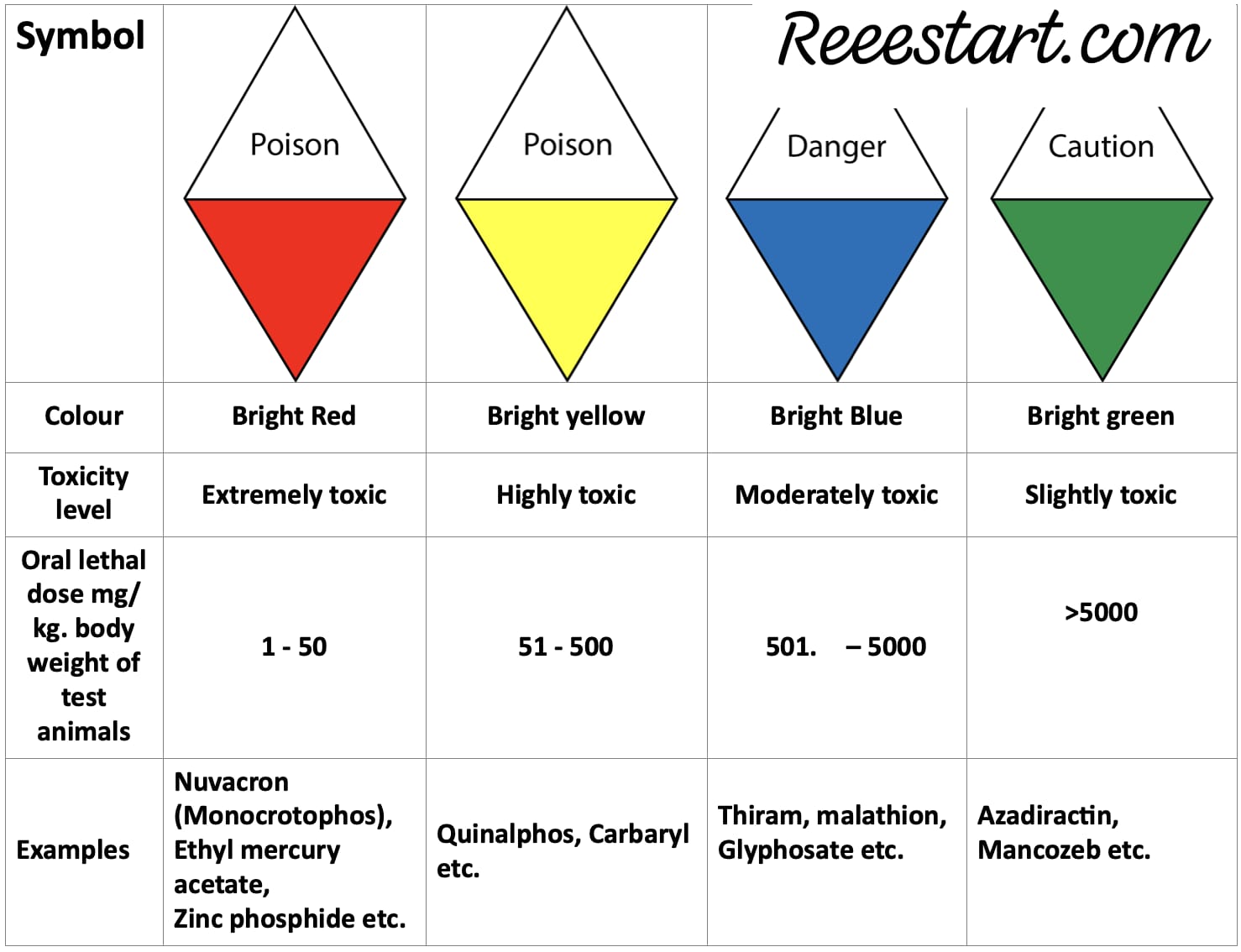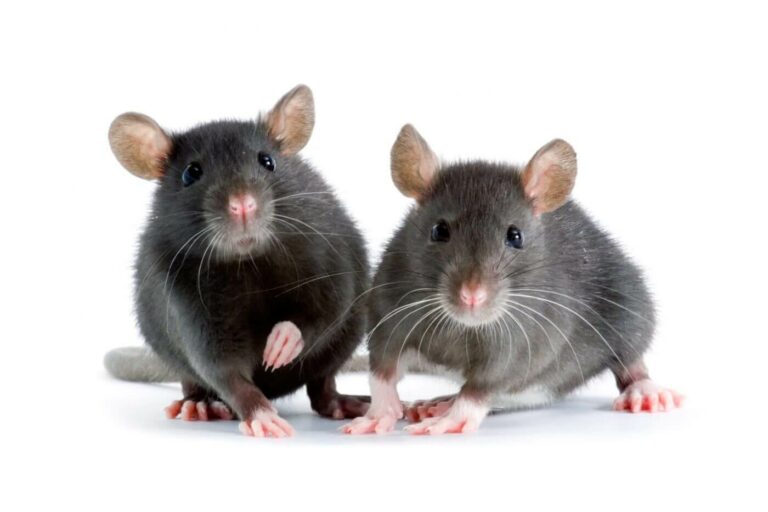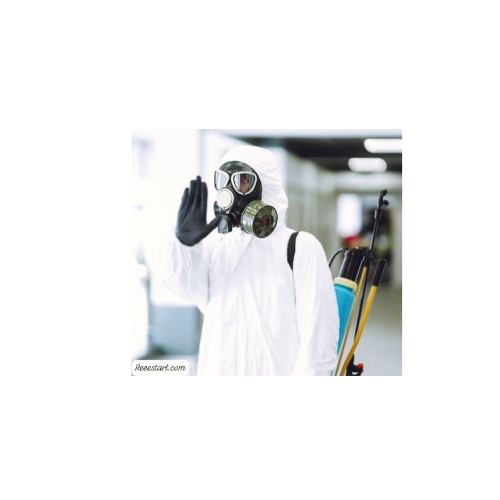In Dubai’s rapidly expanding urban and agricultural landscape, the role of pest control engineers is increasingly critical. The city’s unique climate and development patterns pose distinct challenges for pest management, making a thorough understanding of pesticide toxicity and safety protocols essential. As professionals dedicated to safeguarding public health and maintaining ecological balance, pest control engineers must be adept in evaluating and managing pesticide risks effectively.
Pesticide Toxicity and Chemical Classification for Pest Control Professionals in Dubai
This involves not only knowing how to use pesticides responsibly but also understanding their toxicity levels and the chemical properties that influence their effectiveness. Whether dealing with residential, commercial, or agricultural environments, the ability to interpret toxicity metrics such as LD50 and the chemical classifications of pesticides is crucial. This knowledge ensures that pesticides are applied safely, minimizing risks to human health, non-target species, and the environment.
In this guide, we’ll explore the toxicity scale for pesticides, delve into chemical classifications, and discuss best practices to mitigate potential risks. By leveraging this information, you can enhance your pest control strategies, ensure compliance with safety regulations, and contribute to a healthier and more sustainable Dubai.
Pesticide Toxicity Scale
Understanding pesticide toxicity and the LD50 metric, along with chemical classifications of pesticides, is crucial for professionals in public health pest control.
- All agricultural sectors—whether crops, vegetables, fruits, poultry, livestock, or pest control—use chemicals, pesticides, nutrients, and fertilizers.
- If not used correctly, these substances can become lethal, affecting plants, animals, humans, or disrupting ecological systems.
- Given the responsibility borne by pest control professionals, it’s essential to have a thorough understanding of pesticide toxicity terms, LD50 standards, harmful effects, safe intervals for crops, and Good Agricultural Practices (GAP).
In a separate article, we provided a comprehensive explanation of how to read pesticide labels. Today, we will discuss the toxicity scale and chemical groups responsible for pesticide efficacy.
Pesticide Toxicity Scale
- LD50 Classification
The World Health Organization (WHO) classifies pesticides based on the median lethal dose (LD50) through ingestion, skin contact, or inhalation. LD50 is measured in milligrams of the active substance per kilogram of body weight required to kill 50% of test animals.
The LD50 metric, introduced in 1927 by John William Trevan, indicates the toxicity level of a substance. It can be expressed as LD50 (Lethal Dose, 50%), or LCt50 (Lethal Concentration & Time).
The WHO classifies toxicity levels as follows:
La (Extremely Toxic).
- Oral Exposure.
- Solid Pesticides: ≤ 5 mg/kg
- Liquid Pesticides: ≤ 20 mg/kg
Dermal Exposure
- Solid Pesticides: ≤ 10 mg/kg
- Liquid Pesticides: ≤ 40 mg/kg
Lb (Highly Toxic):
- Oral Exposure:
- Solid Pesticides: 5-50 mg/kg
- Liquid Pesticides: 20-200 mg/kg
Dermal Exposure
- Solid Pesticides: 10-100 mg/kg
- Liquid Pesticides: 40-400 mg/k
II (Moderately Toxic)
- Oral Exposure:
- Solid Pesticides: 50-500 mg/kg
- Liquid Pesticides: 200-2000 mg/kg
Dermal Exposure
- Solid Pesticides: 100-1000 mg/kg
- Liquid Pesticides: 400-4000 mg/kg
III (Slightly Toxic)
- Oral Exposure:
- Solid Pesticides: ≥ 500 mg/kg
- Liquid Pesticides: ≥ 2000 mg/kg
Dermal Exposure
- Solid Pesticides: ≥ 1000 mg/kg
- Liquid Pesticides: ≥ 4000 mg/kg
+III (Practically Non-Toxic)
- Oral Exposure:
- Solid Pesticides: ≥ 2000 mg/kg
- Liquid Pesticides: ≥ 3000 mg/kg
Chemical Classification of Pesticides
Inorganic Pesticides
- Examples: Sulfur compounds, metallic copper.
Natural Organic Insecticides
- Examples: Some spray oils.
Synthetic Organic Insecticides
- Examples: Fumigants, organochlorines, organophosphates, carbamates, pyrethroids.
Synthetic Organic Pesticides Breakdown
Organochlorines
- Known for their long-term stability and less use nowadays. Common groups include DDT, HCH, cyclodienes, and turpentines.
- Example: Pentachlorophenol.
Organophosphates
- Highly toxic to mammals; caution required. Examples include dichlorvos, chlorpyrifos, and diazinon.
- Examples: Finotrothion, Pirimiphos Methyl, Dichlorvos, Diazinon.
Carbamates
- Known for their quick action and fast degradation. Examples include carbaryl and propoxur.
- Examples: Carbaryl, Propoxur, Bendiocarb, Methomyl.
Pyrethroids
- Effective against various pests. Examples include cypermethrin and permethrin.
- Examples: Cypermethrin, Permethrin.
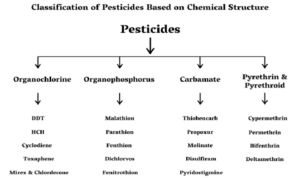
Issues Related to Pesticide Use and Toxicity
- Health issues for applicators if safety guidelines are not followed.
- Environmental damage and pesticide accumulation in soil and water.
- Impact on non-target organisms, including beneficial insects and farm animals.
- Health risks from pesticide residues on crops.
- Increased production costs and potential resistance development in pests.
Additional Concepts
- Preventive Control: Using pesticides before pests appear to prevent infestation. This approach involves applying larger quantities of pesticides.
- Good Agricultural Practices (GAP): Practices ensuring agricultural production meets health and environmental standards from land preparation to harvest.
- Pre-Harvest Interval (PHI): The time required between the last pesticide application and crop harvest to ensure residue levels are below safe limits.
- Pest Resistance: When pests develop the ability to survive doses of pesticides that previously killed them, often due to genetic factors and repeated use of the same pesticide.
- Phytotoxicity: Damage to plants caused by excessive pesticide application, leading to plant burn or injury.
- Toxicity: The potential of a pesticide to cause harm, determined by dose and exposure time.
- Natural Pesticides: Plant extracts used to control pests before the advent of synthetic chemicals. Examples include neem and garlic extracts.
- Understanding these concepts is essential for safe and effective pest control practices that protect public health and the environment.
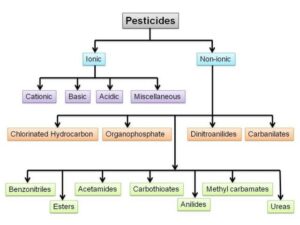
References
1. World Health Organization (WHO). (n.d.). Pesticide Toxicity and LD50 Classification. Retrieved from WHO.
2. U.S. Environmental Protection Agency (EPA). (2022). Pesticide Registration Manual: Toxicity Categories. Retrieved from EPA.
3. National Pesticide Information Center (NPIC). (2023). Pesticide Toxicity Information.

